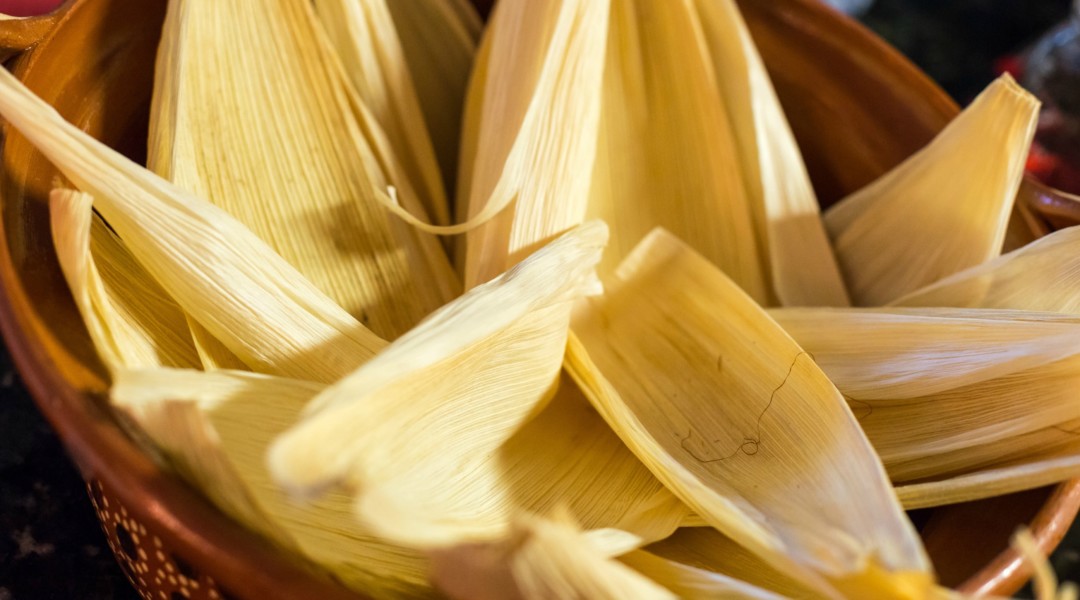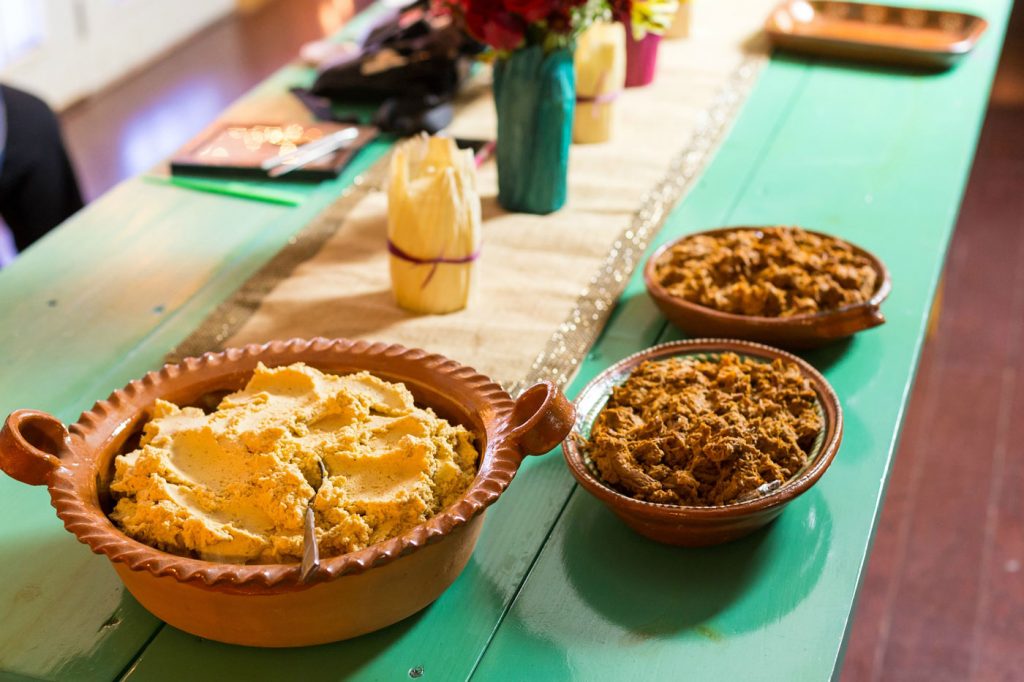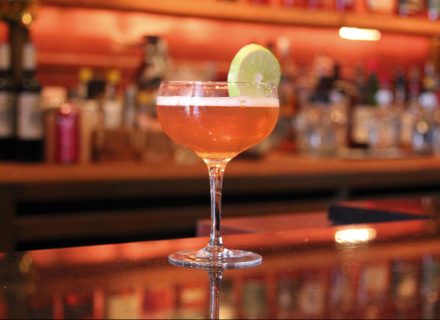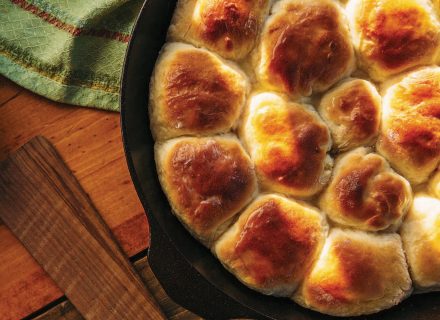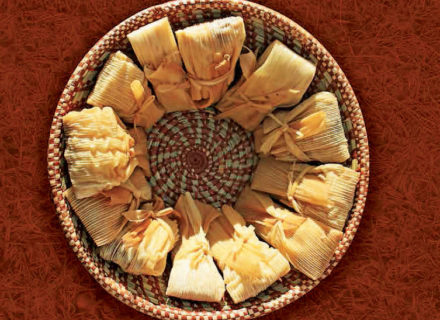Synonymous with togetherness, tamales are a required rite of the yuletide season in the Lone Star State.
Christmas without tamales in Texas is a hollow affair. For Texans of all racial and ethnic backgrounds, the consumption of tamales — fluffy, steamed corn husk-wrapped joyful parcels of corn dough (masa) filled with spiced meat, cheese, beans, even fruit — is a required rite of the yuletide season. Mention that you have never had tamales before or express that there is a limit to the number of tamales that can be consumed in a sitting, and you’ll earn Texans’ glare.
I learned this through my wife, Jessica, a native Texan. While we were still dating and living in Brooklyn, we were preparing for a holiday visit from her mom, Robin. Jess requested that her mother bring north a dozen of Jess’ favorite red-chile pork tamales. “And, Mom,” Jess told Robin during a phone call, “a dozen of the spicy green-chile chicken tamales would not be turned away either.” And so 24 frozen tamales from Pepe’s Tamales in El Paso, Texas, where Robin grew up, were schlepped to New York in time for Christmas. Because, in the words of my wife and my mother-in-law: “Who doesn’t eat tamales for Christmas?”
The texture of the El Paso-made tamales was slightly denser and drier than the light, almost airy tamales I had known from Mexico.
But that’s not a fair comparison because tamales in Mexico vary from region to region, from the sauce-covered corunda of Michoacán to the fragrant and enormous zacahuil of the Huasteca region, which is cooked underground and is large enough to feed a village. In Texas as in Mexico, tamales are part of local cuisines. They differ from one state to the other, and even from one region of a state to another, says Iliana de la Vega, executive chef and co-owner of El Naranjo, a fine-dining Oaxacan-style Mexican restaurant in Austin, Texas. “For example, in the central valleys of Oaxaca, one can find perhaps 10 different kinds, including the famous tamal oaxaqueño that everyone knows under that name. It’s a mole negro and chicken tamal wrapped in banana leaf,” she says. “But go to the coast, and you can find a tamal de cambray made with pork and beef. It has capers, olives, raisins, almonds, etc. In a different region, a tamal de tichindas is made with mussels. The list is endless.”
As for variations on the tamales theme in Texas, Southern California native Lesley Tellez — author of Eat Mexico: Recipes From Mexico City’s Streets, Markets & Fondas, and owner of a culinary tour company in Mexico by the same name — lived and ate in the Lone Star State for a time and boils it down to this: “People just referred to them as red or green tamales.”
The El Paso tamales were slightly bigger than standard tamales, too, but they retained an airiness that fooled you into thinking you could eat more than your fill. But it was the kick I most remembered. The green-chile chicken tamales employed the New Mexico green chile popular in El Paso, which befits a Rio Grande border town wedged between sister city Juarez, Mexico, and the Land of Enchantment. Those tamales bore a heat that coated your gums and lashed your tongue. The spice left you salivating, eager for more.
On our first two visits to El Paso to visit Jess’ grandfather, we made stops at Pepe’s Tamales. At the adobe-hued strip-mall storefront operation, founded in 1978 by Jose “Pepe” Ignacio Reyes, orders had to be called in ahead of time, especially on Sundays — and without question ahead of the holidays. There is a limit to how many of these labor-intensive treats one can produce. They are a pain in the neck to make. But the laboriousness and the history of tamales matter, and make them all the more special.
The tamal (the proper singular for tamales) is an ancient pre-Columbian food made from nixtamalized corn dough (that is, corn kernels soaked in an alkaline solution that separates the hull from the kernel’s center, imbues the corn with nutrients, and allows for the grinding of the corn into dough), a filling, and either a banana leaf or a corn husk wrapper that makes a tidy little package for steaming.
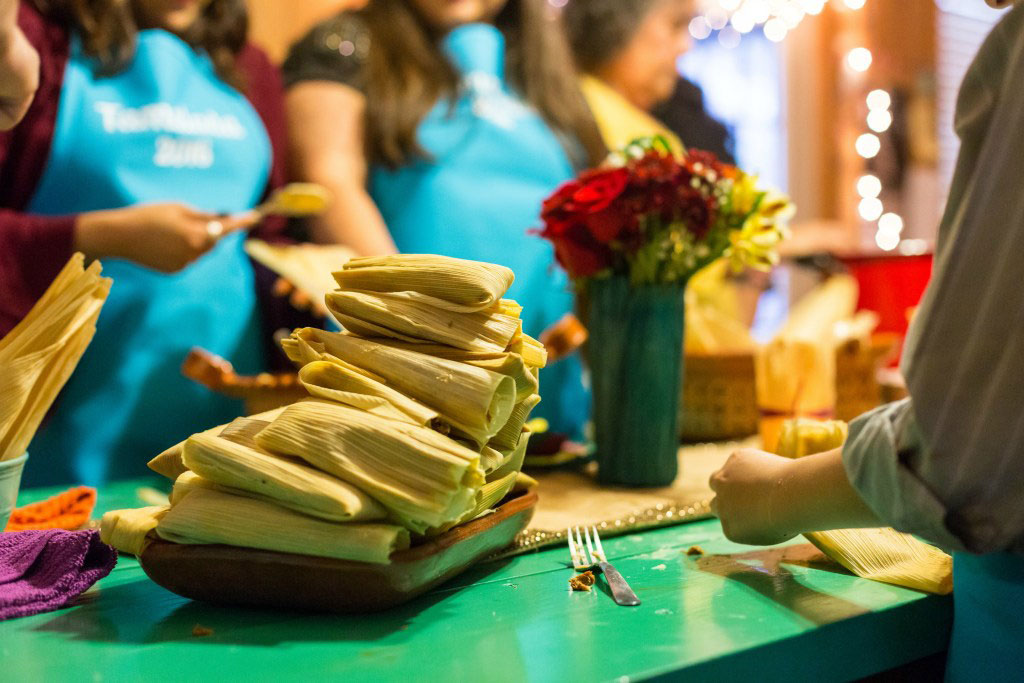
Tamales are work. Preparing the masa can take hours — even when using dehydrated nixtamalized corn flour like Maseca found at any big box store — never mind making the filling. Then there is the assembly. For several reasons, that alone can require troops to pull off. "Tamales make a delicious excuse to get together,” says de la Vega.
But it’s that very need for time and help that makes tamales a Christmas tradition. They are synonymous with togetherness, a shared effort of family and friends.
One can’t just whip up a a few tamales. If you’re going to go through all the trouble of making masa and cooking up the filling, it might as well be a large serving. The bonding experience of a group of people (usually extended family) coming together to prepare a celebratory food item over an extended period of time is such an important act that it has a name: tamalada, or a tamal-making party.
It’s so much more than logistics.
“We have a family tamalada every year,” says Vianney Rodriguez, the Aransas Pass, Texas-based author of The Tex-Mex Slow Cooker: 100 Delicious Recipes for Easy Everyday Meals and co-author of Latin Twist: Traditional and Modern Cocktails. “We come together as a family to make tamales, a TON of tamales. My abuelita used to host this event, then it was passed on to my mami, now I host it. [It’s] a wonderful way to preserve tradition while creating new traditions and plenty of memories. A tamalada is also a wonderful way to honor those who came before you. For the last five years, I have been given the honor, or as my little brother puts it, been handed down the torch, to host our annual tamalada.”
Like all family gatherings, the tamaladas have not been without excitement. As Rodriguez says: “Last year, my dishwasher exploded — the entire kitchen flooded. It was a mess. But luckily, my little brother was able to fix the pipe as the kids mopped up the floor. We all laughed and kept on making our tamales.
“And it was all worth it as we sat at the table enjoying the first batch of fresh tamales straight from the pot. Piping hot, with a sprinkle of salt. Delicious. A tamalada is truly a family affair. From prepping to mixing, to spreading, to filling, to hosting a tamalada, it is truly a labor of love. But it is so worth it.”
“Tamales at Christmastime is something that unifies us all,” Tellez says.
Last year, my dishwasher exploded — the entire kitchen flooded. It was a mess. But luckily, my little brother was able to fix the pipe as the kids mopped up the floor. We all laughed and kept on making our tamales.
Gabriel Tellez (no relation to Lesley Tellez) of Tellez Tamales & Barbacoa in San Antonio agrees. “Tamales mean unity and family to me,” he says. “Even though the whole year you may be fighting with your siblings or with your aunts and uncles, come Christmastime, tamales mean peace.”
Like Pepe’s Tamales in El Paso, the Tellez family business in San Antonio was founded in the 1970s (in this case, 1976, by Luis and Manuela Tellez) and is an institution for the city and beyond. Tellez tamales have been shipped to as far as Saudi Arabia. But there’s nothing like tamales at home in San Antonio. “We’ll have 10, 12, 15 police officers directing traffic. Our customers are very dedicated,” Tellez says. During the month of December alone, Tellez sells about 150,000 dozen tamales — all of them made by hand.
My little family doesn’t get elbow deep in corn masa for the holidays. But we do spread out a few dozen tamales from a whole bunch of places on our dinner table. My wife’s favorites are from The Tamale Company catering outfit in Dallas. My son goes for the traditional Tex-Mex tamales at our go-to neighborhood spot, Vera’s Bakery. I add to the mix with variations from Urban Taco: potato and zucchini with queso fresco, carnitas with mole poblano, and barbacoa, among other options.
All that procuring means a lot of running around town, but we wouldn’t have it any other way. It wouldn’t be Christmas without tamales.

El Naranjo, 85 Rainey St., Austin, TX 78701, 512.474.2776, elnaranjorestaurant.com
Pepe’s Tamales, 9530 Viscount Blvd., El Paso, Texas 79925, 915.591.7949
Tellez Tamales & Barbacoa, 1737 S. General McMullen Dr., San Antonio, Texas 78237, 210.433.1367
The Tamale Company, thetamalecompany.com
Urban Taco, Mockingbird Station, 5321 E. Mockingbird Ln. #105, Dallas, Texas 75206, 214.823.4723, urban-taco.com
Vera’s Bakery, 932 W. Davis St., Dallas, Texas 75208, 214.943.2167
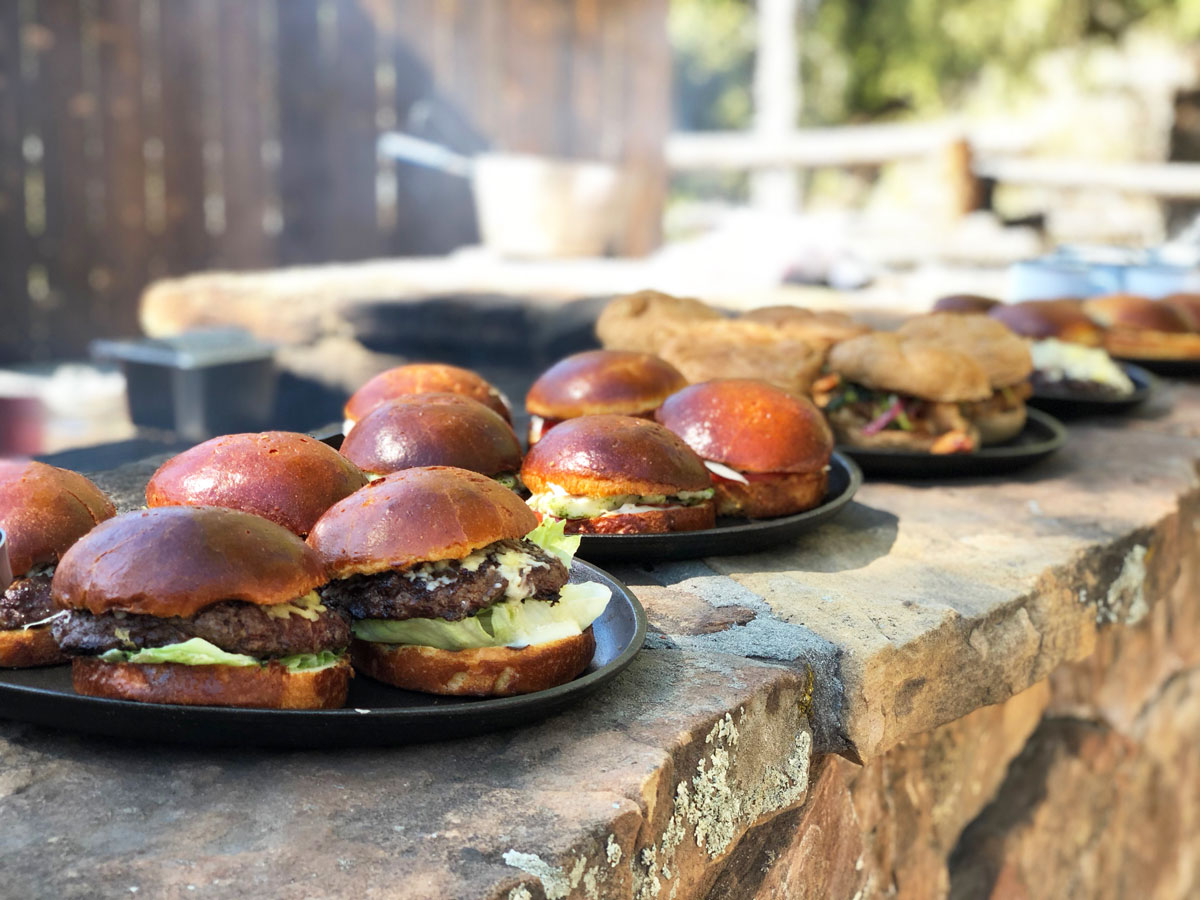
Comforting Recipe: Roasted Poblano Mac and Cheese
Cocktail Recipes: A Carousel of Christmas Cocktails
Western Pantry: C&I’s Favorite 2018 Tastes of the West
Potluck: We want to know what whets your appetites at home. Send us your favorite recipe (for cocktails or tamales) and the stories behind them, and we might just post one on the C&I website.
Photography: Courtesy Vianney Rodriguez/Sweet Life, Reprinted with permission by Cider Mill Press Book Publishers (Photography: © Cider Mill Press Book Publishers), Carrie Baird (Magee Homestead)






